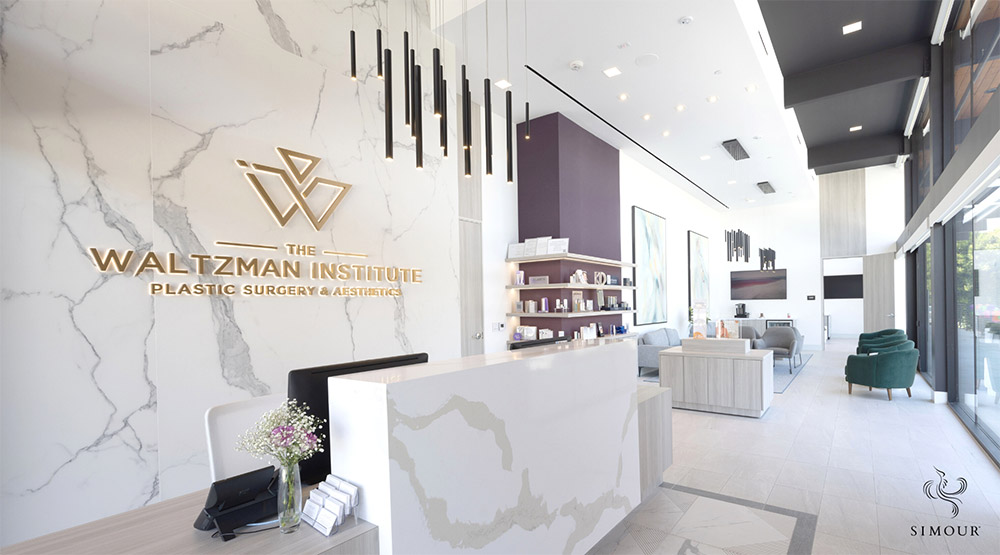“The best way to predict the future is to create it.” – Abraham Lincoln
As advancements in technology, changing patient demographics, and evolving regulations continue to reshape the industry, private equity investors need to focus on forming resilient, future-proof healthcare facilities that will adjust to ever-changing challenges. By incorporating innovative interior design principles, these facilities can adapt to emerging trends with little to no disruption, and provide sustainable, patient-centric care. In this blog post, we will explore the concept of future-proofing healthcare facilities and provide valuable insights for private equity firms seeking to invest in healthcare facilities that are responsive amidst the ever-changing industry landscape.
1. Flexibility and Adaptability
Future-proof healthcare facilities must be designed with flexibility and scalability in mind. The ability to adapt to changing patient demands, advancements in medical treatments, and evolving regulations is crucial. Facilities should be designed with modular and flexible spaces that can easily accommodate changes in technology, care delivery models, and patient needs. Flexible floor plans and modular construction methods allow for seamless adaptation, accommodating new treatment modalities, equipment upgrades, or changes in patient volumes. By planning for growth and scalability from the outset, facilities can avoid costly renovations or expansions down the line. To ensure long-term success, private equity firms need to focus on designing facilities that can adapt and respond to these changes effectively. Future-proofing healthcare facilities entail creating spaces that are flexible, scalable, and equipped to accommodate emerging technologies and patient-centric care models.
2. Patient-Centric Design
Patient-centric care is a driving force in modern healthcare, and private equity firms must consider this approach when designing healthcare facilities. Patients’ expectations are changing, and they now seek an enhanced experience during their healthcare journeys.
Facilities should incorporate patient-friendly design elements, such as comfortable waiting areas, natural lighting, soothing color schemes, and clear wayfinding systems. Incorporating natural lighting, soothing color schemes, comfortable waiting areas, and outdoor spaces can significantly improve the overall patient experience. Additionally, incorporating patient feedback loops through technology, such as patient portals and real-time satisfaction surveys, helps enhance care delivery. Moreover, integrating patient engagement technologies, such as self-check-in kiosks or patient portals, can empower patients to actively participate in their care. By prioritizing patient-centric design, private equity firms can differentiate their facilities and attract both patients and healthcare providers who value an empowered, holistic, and satisfying healthcare experience.
3. Technology and Digital Integration
One of the most critical considerations in designing future-proof healthcare facilities is embracing technology and digital integration. Healthcare is experiencing a digital revolution, and facilities need to be equipped to handle the changing landscape. Private equity firms should invest in state-of-the-art infrastructure, such as electronic health records (EHR) systems, telemedicine capabilities, and advanced imaging technologies. The integration of technology is paramount in future-proofing healthcare facilities. Private equity firms should collaborate with architects and designers to incorporate smart solutions, such as Internet of Things (IoT) devices, artificial intelligence, and telemedicine capabilities. These technologies not only enhance efficiency but also improve patient outcomes by enabling remote monitoring, predictive analytics, and personalized treatment plans. These digital integrations enhance patient care, improve operational efficiency, and enable seamless communication between healthcare professionals. By designing facilities with future-proof technology infrastructure, private equity firms can position their investments to remain relevant and competitive in the evolving healthcare market.
4. Sustainability and Environmental Considerations
Designing future-proof healthcare facilities involves prioritizing sustainability and environmental considerations. Private equity firms must prioritize energy-efficient systems, sustainable materials, and environmentally conscious practices. Incorporating energy-efficient systems, green building materials, renewable energy sources, optimizing water and waste management, and designing for natural disaster resilience can reduce operating costs, minimize the facility’s carbon footprint, and enhance long-term viability. Furthermore, integrating nature and outdoor spaces into facility design can enhance patient well-being and promote healing. Implementing environmentally friendly practices not only reduces costs and lowers the carbon footprint but also aligns with the growing emphasis on sustainability in the healthcare industry. By incorporating sustainable and eco-friendly practices, private equity firms can future-proof their investments while contributing to a healthier planet, reducing operational costs, and elevating the facility’s reputation.
5. Adapting to Regulatory Changes
Healthcare regulations are continuously evolving to address emerging challenges and ensure patient safety. When designing healthcare facilities, private equity firms must stay informed about current and anticipated regulations to meet compliance standards. Engaging with design professionals who have expertise in healthcare regulatory requirements can help navigate these complexities effectively. By building facilities that are adaptable to changing regulations, private equity firms can mitigate risks and ensure long-term viability.
6. Collaboration and Integration
The future of healthcare lies in seamless collaboration and integration among different healthcare providers and disciplines. Private equity firms should design facilities that foster interdisciplinary teamwork, allowing healthcare professionals to work together efficiently. Integrated care models, such as co-locating primary care, specialists, diagnostic services, and rehabilitation facilities, can improve patient outcomes and reduce healthcare costs. By designing spaces that facilitate communication and collaboration, private equity firms can create healthcare facilities that are primed for success in the evolving landscape of care delivery.
By considering these key insights, private equity firms can position themselves at the forefront of the evolving healthcare industry, delivering high-quality care, improving patient outcomes, and maximizing return on investment. If you feel that you are ready to seize a slice of growth for your healthcare investments, we invite you to book a discovery call today. As the landscape of healthcare continues to evolve, those who invest in future-proof facilities will be well-equipped to navigate the challenges and capitalize on the opportunities that lie ahead.




